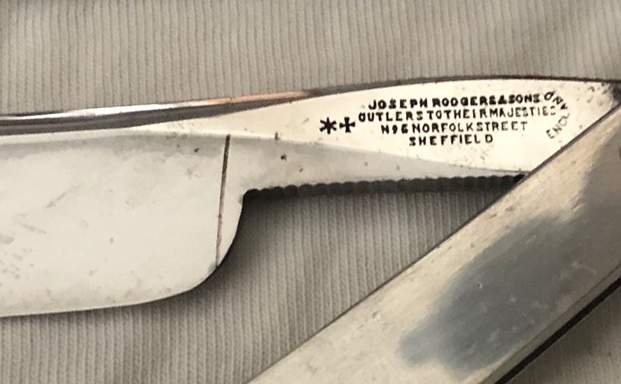Results 1 to 10 of 17
Threaded View
-
12-22-2018, 09:32 PM #1
 Question About Shoulderless Grinds with Demarcated Shoulders
Question About Shoulderless Grinds with Demarcated Shoulders
Over the years I've noticed a number of Joseph Rodgers razors (from both the 19th and 20th centuries) that have shoulderless grinds, yet also have a thin line etched or stamped across the blade to demarcate a shoulder.
Here's a pic of what I'm talking about:

My question is, is this a stylistic quirk unique to the Rodgers firm, or was it something that multiple makers did? In my records the only non-Rodgers razors with this feature are marked with the names of retailers who didn't make cutlery themselves.
Of course, regarding my record keeping, I haven't really been tracking this specific feature, so it's possible I've seen this grind on pieces made by several cutlers but didn't find it worth making note of at the time.
I poked around a bit in the archives here and couldn't find anything on this topic, but if I missed an old thread, please point me in the right direction.
-
The Following User Says Thank You to Hanlon For This Useful Post:
MikeT (12-23-2018)


 91Likes
91Likes LinkBack URL
LinkBack URL About LinkBacks
About LinkBacks






 Reply With Quote
Reply With Quote